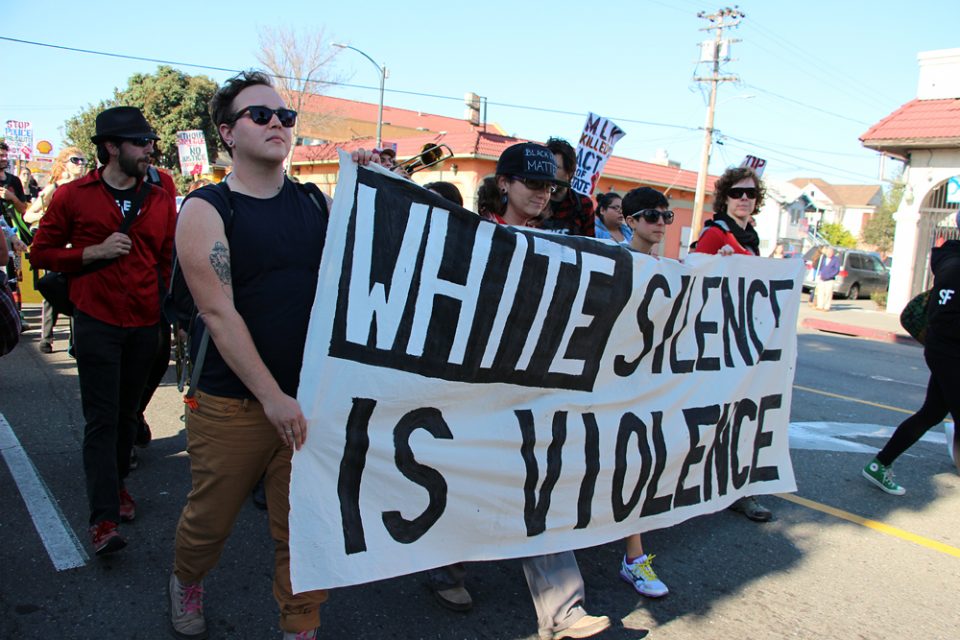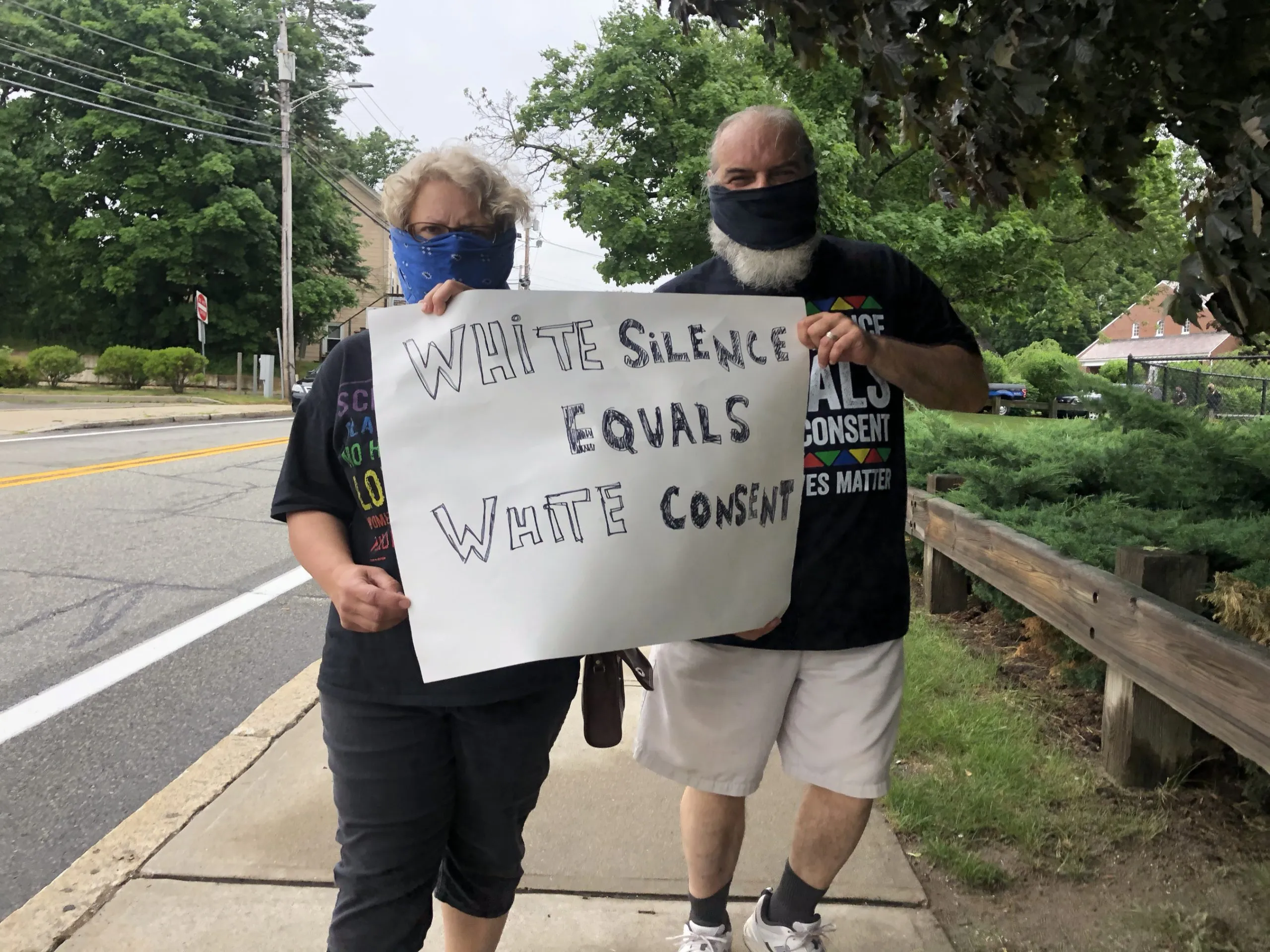The ideology of white supremacy pervades culture in subtle yet pernicious ways.
KEY POINTS
- White supremacist ideology permeates many cultures through subtle biases built into society’s institutions.
- From childhood, biases and stereotypes unconsciously shape thinking and can accumulate into racism.
- Microaggressions and other forms of racist behaviors can have cumulative harmful effects.
- Dismantling racist hierarchies rooted in white supremacy will require radical structural societal change.
We often dismiss white supremacists as extreme outliers, such as neo-Nazis or the KKK, but the ideology of white supremacy pervades mainstream culture in subtle yet pernicious ways. Examples include media that primarily feature white characters and reporters, work environments where ethnic hairstyles are seen as “unprofessional,” and curricula that fail to reflect the diversity of human experiences and achievements.
From early years, children unconsciously absorb subtle biases and stereotypes that permeate their thinking. The media frequently depict minorities as menacing or subordinate, exemplified by portrayals of Latino gang members or black “welfare queens.” Past research has highlighted significant racial biases in children’s animated films, where characters of color are not only underrepresented but also commonly depicted in a negative light (e.g., Towbin et al., 2004). Furthermore, within social circles, praising black individuals for “acting white” reveals entrenched inequalities and the ingrained notion of whiteness as the standard or ideal.
These “microaggressions” accumulate over time, affecting lives in both subtle and significant ways (Bettache, 2022). From a young age, black girls might be conditioned to view their natural hair as “unprofessional” or “distracting,” with the pressure to conform to white beauty standards persisting into adulthood. Children from other diverse backgrounds, including those with Arab or Muslim heritage, may also frequently face “othering” experiences, as they encounter questions about their citizenship, accents, or perceived “true” ethnicity (Haque et al., 2019; Sirin et al., 2021). A lifetime of such nuanced, yet dehumanizing experiences often profoundly shapes one’s sense of belonging and identity within society.
For black girls, discrimination based on hair texture is a common experience that reinforces their position as outsiders in some environments. Some schools have even prohibited natural hairstyles, considering them “unruly” or contrary to policies requiring a “professional” appearance (Macon, 2014). The message is that to succeed and be accepted, black women must conform to white norms rather than embrace their cultural heritage and identity. Such policies inflict psychological harm and perpetuate racist beliefs that natural black hair is somehow unkept or unclean.
Children with diverse cultural backgrounds, such as those of Middle Eastern descent, often experience relentless pressure to “assimilate” and demonstrate their loyalty. They may face ridicule for their accents, food, attire like the hijab, or names, and encounter persistent suspicion and distrust, particularly in the aftermath of events like 9/11 and the War on Terror (Sirin et al., 2021). Hearing demands to “go back to your country” is not uncommon.

For those from mixed heritage, questions like “What are you?” can make them feel that their very existence is peculiar or “other.” Even multigenerational citizens may still be confronted with doubts about their national belonging due to factors like skin tone or surname.
While microaggressions can seem minor when viewed in isolation, the cumulative effects of repeated slights, indignities, and insults can cause real harm over time. They send the message that you do not belong due to your race, religion, or ethnicity. For marginalized groups, this can result in anxiety, social exclusion, low self-esteem, depression, and even physical health issues over the lifespan. Microaggressions are not merely “subtle”—they inflict a thousand small cuts that, together, have the power to maim and oppress.
White Normativity: Unraveling Social Conditioning
Decades of research have unveiled unsettling societal patterns, demonstrating that children as young as 3 years old are highly attuned to racial cues and unconsciously perpetuate racism (Aboud, 2008; Hirschfeld, 2008; Patterson & Bigler, 2006; Van Ausdale & Feagin, 2001). This early sensitivity to race is not inherent at birth, but rather developed through social influences, emphasizing the social nature of such biases.
Preschoolers, for example, exhibit preferences for lighter skin and favor white-sounding names. These implicit biases often persist into adulthood, with one study revealing that job candidates with identical resumes but traditionally African American names received 50 percent fewer callbacks compared to applicants with white-sounding names (Bertrand et al., 2004).
In other words, the social machinery of white supremacy is operational before children can even articulate racial concepts or understand the meanings of stereotypes. Simply by observing the world around them, kids absorb the subtle and not-so-subtle ways that society values whiteness over black- or brownness. Their early associations of darker skin with more negative traits persist even when individuals reject explicit stereotyping and prejudice.
The racial preferences 3- and 4-year-olds display can extend into evaluations of identity, status, and competence, research shows. These may include describing light-skinned dolls as “nicer” or “smarter” than dark-skinned dolls, or associating more positive personality traits with arbitrarily assigned “white-sounding” names over “African American-sounding” names (Gopaul-Mc. Nicol, 1988) The attitudes formed in early childhood go on to influence perceptions and interactions throughout life in ways both profound and often invisible.
For those in the dominant racial group, the effects remain subtle yet considerable, as many develop blind spots to systemic racial inequities that nonetheless privilege them. This stems from willful ignorance of histories centered around whiteness. When faced with facts about racial injustice, some respond defensively rather than with empathy, unable to recognize that racial identity is an experience in and of itself, associated with unearned benefits and advantages not available to all (Liu et al., 2019).
The ideology of white supremacy has been systematically built into the foundation of society over centuries of racist policies and practices. Colonial myths of savagery were used to justify the subjugation and exploitation of groups classified as “non-white” (Horne, 2020). Slavery and the genocide of indigenous peoples established the legal precedent that those with darker skin could be violently oppressed with impunity.
Segregation laws then codified the belief in white dominance for generations. Racial minorities faced legally enforced discrimination and disadvantage in all areas of life, including housing, education, healthcare, and civic participation (e.g., Braveman et al., 2022). The civil rights movement dismantled racist laws, yet more subtle forms of systemic discrimination persist today through mass incarceration, voter suppression, and inequality in access to opportunity and wealth accumulation.
The media has been instrumental in perpetuating harmful racial stereotypes that further marginalize various groups. Depictions of minorities as dangerous threats to public safety coexist with portrayals of “model minorities” as foreigners who achieve success through non-threatening behavior. These representations have sometimes been exploited to rationalize state-sanctioned violence against certain groups, as well as to withhold support for others confronting racial obstacles (e.g., Jewel, 1993; Yu, 2006).
In essence, the origins of white supremacy gave rise to racist institutions that were designed to concentrate power and resources in the hands of one group by denying humanity and equal rights to others. While the mechanisms of oppression have evolved over time, the impact remains the same—the privileging of whiteness through the systematic disenfranchisement and disadvantage of people of color.
Dismantling White Supremacist Cultures
To dismantle a system that has evolved over centuries, we must first acknowledge that racial inequality is neither the outcome of inherent flaws or inferiority within certain groups, nor solely the product of individual racist biases from a few “bad apples.” Instead, I argue that it is the unavoidable consequence of supremacy ingrained within the very foundation of society itself (Bettache, 2020).
We internalize insidious logics that rank human value by skin tone. Without examining the roots of our biases by recognizing the histories rendered invisible by power, injustice is unknowingly reproduced. Gaining awareness presents both peril and possibility. Confronting complicity demands relinquishing privilege and gratification tied to racial advantage.
But the first steps are, I believe, simple. They include things like calling out racist jokes and stereotypes; listening fully to experiences of racism; and supporting diverse authors, businesses, and creative work.
However, individual acts of awareness and allyship alone will not transform racist structures or lift the burden of racism from those marginalized by it daily. Dominant groups must find the courage to decenter themselves in society and actively make space for others. This means advocating and organizing for policy changes that remedy racial inequities, rather than superficial responses aimed at comfort.
Racial justice demands radical societal changes, not diversity workshops or cursory acknowledgments of privilege for those who benefit from supremacy. It requires reckoning with racist institutions and the concentration of power that allows some to rise by holding others down. At its heart, the system was not built in equity or fairness. Changing people’s hearts and minds means little without fundamentally changing the rules of the game itself.
Getting there will demand humility, sacrifice, and perseverance from those who have yet to face barriers due to skin tone. It will mean amplifying voices that challenge racist structures instead of centering comfort. It will require allowing the experiences of marginalized groups to shape policy and guide the way forward.
In conclusion, the crux of the matter lies in the choice society must make: to either sustain existing systems perpetuating inequality or to actively create new pathways that foster liberation and a sense of belonging for individuals of all ethnic backgrounds. To accomplish equitable outcomes, it is imperative to acknowledge that the notion of equal opportunity has been a mirage from the outset.
Genuine change stems from introspection, challenging the ingrained biases that have been shaped by a racially prejudiced culture. In our quest to dismantle systemic oppression, it is essential to radically transform the very framework that shapes the collective consciousness of society.


Ya’ll seem to diagnose, and identify the symptoms, but, the solution, is like a mystery to ya’ll, and I wonder why?🤔
Did you read the whole article? There are 5 solutions listed. Why are you attacking the black press that bring out these issues? Are you a real black person or just soe kinda troll?